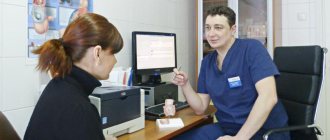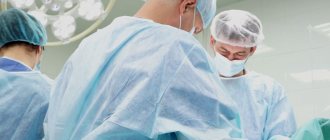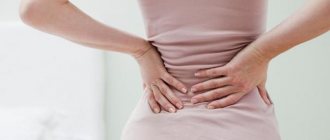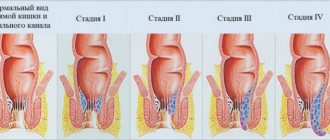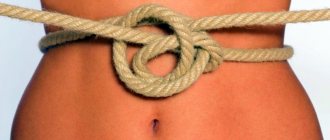As soon as the baby is born, the mother's uterus decreases in size, and the abdominal organs begin to get used to the new condition. Gynecologist Alexander Shlychkov talks about how to eat properly and what rules are best to follow in the first days after childbirth.
By the end of pregnancy, the intestines are in a compressed state. This significantly complicates the passage of food and may be one of the causes of constipation during pregnancy. Usually in the maternity hospital, women in labor are given cleansing enemas (to prevent involuntary emissions from the intestines during delivery). This is why women do not experience stool on the first or second days after childbirth. If a woman was not prepared in this way, she did not have any enemas, then her intestines begin to work immediately after childbirth as usual.
It is important! Water in large quantities is simply necessary in the first days after childbirth. It restores the water balance of the intestines and normalizes its functioning.
Natural childbirth
If during childbirth a woman has tears in the vagina, or she has had an episiotomy (dissection of the tissue of the perineum), doctors cannot do without stitches. spastic constipation is most often observed : the intestines are in a compressed state, sometimes accompanied by abdominal pain.
What to do?
- A young mother should not sit (only stand or lie down); it is also not recommended to push.
- Take antispasmodic drugs.
- Follow a special diet that improves intestinal motility.
Digestive system disorders after childbirth
Causes of intestinal disorder
- During pregnancy, the mode and structure of intestinal functioning changes. When the impact of the uterus after childbirth on all organs of the gastrointestinal tract decreases, the intestines need some time to get used to their normal position.
- Pregnancy and childbirth inevitably lead to changes in hormonal levels. This cannot but affect the functioning of all internal organs and systems, including the gastrointestinal tract.
- If the birth took place by caesarean section, then anesthesia was necessarily used. Drugs used for pain relief also always affect the digestive system.
- In some cases, a course of antibiotics is prescribed after childbirth. They can cause intestinal dysbiosis. To eliminate this problem, special medications are often prescribed.
Causes of pain in the intestines
- Postpartum hemorrhoids are often the cause of intestinal dysfunction. If a woman had it before childbirth, then after childbirth it may worsen. In this condition, sometimes everything is accompanied by pain when visiting the toilet.
- The abdominal muscles weaken during childbirth, which contributes to the development of constipation. Also, the normal process of bowel movement can be hampered by sutures in the perineum.
- Tissue ruptures in the genitals and sutures placed on them provoke spasms of all adjacent organs. Because of this, constipation and intestinal pain often occur.
Diet after childbirth
A woman’s diet in the first 2-3 days should consist only of liquid food: still mineral water in large quantities, broths. Then, gradually, the young mother should switch to more solid foods, limiting the consumption of bread and flour products.
The main thing is that the food contains a large amount of fiber - it actively helps the intestines work and eliminates problems with stool. As you know, fiber is found in vegetables and fruits. Considering that almost all women breastfeed their babies, and it is extremely important not to cause allergies in the baby, choose “universal” fruits and vegetables. Moreover, this list may change depending on the season.
Vegetables and fruits, universal for nursing and non-breastfeeding mothers:
- Zucchini, pumpkin, broccoli, boiled carrots, eggplant, beets.
- Apples, pears, bananas, plums, currants, gooseberries, cherries.
Figs and prunes have a beneficial effect on intestinal function in the first days after childbirth (but you should be extremely careful with plums). And also olive or sunflower oil (1 tbsp per day). It is worth reassuring nursing mothers suffering from constipation: an imbalance in intestinal function does not affect the quality of breast milk.
And non-breastfeeding mothers can resume their normal diet within a week after giving birth.
, constipation due to fear is common . Until the stitches heal, the young mother thinks that something might happen during a bowel movement. This is not true: if doctors performed an operation and stitched for 6 days, this does not mean that you have to endure it and not go to the toilet until everything heals! If a woman cannot cope with her fears, nurses in the maternity hospital will help give a cleansing enema.
Recommendations for restoring bowel function
How to restore the intestines after childbirth?
- The very first thing you need to do to restore your intestines is to normalize your diet. You should definitely consult with your doctor on how best to build a diet, which foods will be useful during this period in the current situation, and which will not. First of all, it is necessary to take into account the specifics of the diet for a nursing woman. Fermented milk products should be one of the mandatory components of the daily diet, as well as fiber. It is found in vegetables, fruits, and grains. Fruits and vegetables should be consumed raw.
- To restore the digestive system, it is recommended to drink as much fluid as possible. Ordinary water will do, but only without gas, because... gas provokes flatulence and can lead to bloating in the baby.
- To quickly restore the normal functioning of the gastrointestinal tract, it is recommended to do gymnastics if possible from the very first days after birth. You can start with simple exercises – bending over, leg lifts.
- After a cesarean section, the doctor may prescribe medications with bifidobacteria that normalize intestinal function. Also, if a woman has undergone antibiotic treatment, she may be prescribed lactulose and prebiotics, which also restore intestinal function after childbirth.
- In some cases, you may have to do an enema to empty your bowels. This is not the most pleasant procedure, but you can minimize all discomfort if you use a mini-enema. There are several types of drugs that produce an effect very quickly, and within a few minutes the urge to go to the toilet appears. Typically, such drugs are sold in tubes for single use.
- Pregnancy and childbirth provoke a sharp weakening and severe stretching of the muscles of the pelvic floor and intestines. Over time, this will all return to normal. But doctors recommend providing the body with maximum assistance during the postpartum recovery period. For this purpose, in particular, “Kegel exercises” can be used.
- It is necessary to put your psychological state in order as quickly as possible to reduce the impact of stress. Negative emotions often cause indigestion.
Any medications and traditional medicine should be used only after consulting a doctor!
Restoring postpartum metabolism - proper nutrition and a healthy lifestyle, read our article https://prorozhdenie.ru/585-kak-vosstanovit-obmen-veshhestv-posle-rodov.html
C-section
A caesarean section has a worse effect on the functioning of the intestines than a natural birth, since during the operation the woman is given a certain drug that “inhibits” the functioning of the intestines. This causes atonic constipation . For atonic constipation, a certain drug is used that stimulates intestinal function.
As a consequence and extreme degree of atonic constipation, a woman may experience bloating and bloating. This happens if the uterus ruptures during childbirth, or if the woman in labor had peritonitis.
Sometimes complications caused by a long stay under anesthesia contribute to the occurrence of atonic constipation. But now Russian clinics are pursuing a policy aimed at ensuring that young mothers immediately begin to move actively after giving birth: this affects the functioning of the intestines - it begins to function much better. So, 6-8 hours after a cesarean section, the woman is asked to get up and walk around - more and more every day.
After childbirth - from the first hours to the first weeks
Sign up for an appointment with the doctor
One of the most common illusions of the expectant mother is that immediately after giving birth, the pregnancy, which lasted 9 months, will completely end, and the female body will immediately return to its original state. What will return is certain, but what happens immediately after childbirth is a delusion that needs detailed analysis and “exposure.” The fact is that after the child is born and grows up every day, the countdown of time will begin for his mother - a gradual return to the “pre-pregnancy” state
, through overcoming unpleasant sensations for which one must be prepared. Armed with knowledge, it will be much easier to overcome this difficult period.
The postpartum period begins from the moment of birth of the placenta and continues until the end of involution (reverse development, i.e. restoration) of all organs and systems that have undergone changes in connection with pregnancy and childbirth.
So, let's see how events develop - from the first hours to the first weeks.
The first 2 hours after birth (before transfer to the postpartum ward)
In the first few hours after the end of labor, the woman remains under the supervision of medical personnel in the delivery room, since during this time various complications are possible, such as bleeding, increased body temperature, and changes in blood pressure.
In any case, the initial stage of recovery after childbirth is associated with the following manipulations.
First of all, they conduct a study of the condition of the uterus: immediately after childbirth, the uterus should be dense. If she is relaxed, the midwife does an external massage
, the purpose of which is to remove blood clots accumulated in the uterus and restore the contractility of the uterine muscles. Massage is performed through the anterior abdominal wall.
Immediately after birth, an ice pack is applied
. This is done to actively contract small blood vessels and stop bleeding. Keep the ice for no more than 20 minutes.
Empty your bladder
needed as soon as possible after childbirth. This is done to prevent urological infections, impaired muscle tone of the bladder due to excessive stretching and bleeding due to the fact that the enlarged bladder interferes with normal contractions of the uterus after childbirth. To do this, immediately after giving birth, a woman is given a catheter.
Bed rest
It is customary to observe in maternity hospitals during the first 6-8 hours after birth. You should not get up and walk before this time, even if you seem to be feeling well. Firstly, the female body has suffered a heavy load and needs rest, and secondly, during this period dizziness and even fainting are often observed, associated with a sharp drop in blood pressure, which can lead to a fall and serious injury. In the maternity hospital, you may not even be allowed to go to the toilet - instead you will have to use a bedpan. And if you are still allowed to go to the toilet, then you should not go there alone.
C-section
- a special case. During the first 24 hours after surgery, the young mother is in a special postpartum ward (or intensive care ward) under constant supervision: her blood loss is corrected, antibacterial therapy is started to prevent postoperative infectious complications, and intestinal function is stimulated.
The main symptoms that appear in the first few hours after birth
- Chills, hunger and thirst.
- A slight fever immediately after giving birth - possibly due to dehydration.
- Extreme fatigue, especially if labor was long or difficult.
- Pain at the stitch site and then numbness in the area if you had a C-section (especially if it was your first) or after an episiotomy.
The first days after childbirth (postpartum ward)
Most often, the first look in the mirror is not pleasing - after giving birth, a young mother often looks as if she had been in a fight - red eyes, numerous brown dots on her face, similar to moles. Pushing during the difficult second stage of labor can cause blood vessels in and around the eyes to rupture.
, which causes the eyes to become red and may even cause bruising around them. This is most likely if a woman holds her breath and at the peak of the effort her pressure in the vessels of her head rises sharply. What to do with such “beauty”?
Cold compresses on the eyes (10 minutes each), applied several times a day, will have a calming effect and speed up recovery, which will occur in a maximum of 6-10 days. In about a week, the hemorrhages on the face will also disappear.
Naturally, lochia
- discharge of residual blood, mucus and tissue from the uterus. In the first three days after birth, they are usually as heavy (and sometimes more heavy) as during menstruation - their total volume can be about 300 ml. In the first days after birth, the main component of lochia is blood from vessels that have ruptured at the placenta insertion, so the discharge is intensely red. Increased discharge when standing up and other movements is a normal process.
After childbirth, a woman may also experience muscle pain in different parts of the body.
. Which muscles hurt the most depends on which group you strained the most during childbirth: the pain can be concentrated in the chest, back, legs and even shoulders. If the pain is indeed muscular in nature, it should gradually subside over the next few days. To reduce discomfort, you may be advised to heat (in the form of hot baths or heating pads) or prescribed a pain reliever.
Cramping abdominal pain that gets worse during breastfeeding
, are caused by normal postpartum contractions of the uterus, which is busy with important work: it compresses the blood vessels that were torn during the separation of the placenta and returns to the size it had before pregnancy. Postpartum painful contractions are experienced primarily by those women whose uterine muscles have been significantly stretched, which is more typical for repeated births and for the birth of twins. Many mothers giving birth to their first child do not even notice such pain. Painful contractions become especially noticeable during breastfeeding because sucking releases the hormone oxytocin, which stimulates uterine contractions. At first, a painkiller will help; the pain usually goes away within two to seven days. If this does not happen, or if pain medication does not help, tell your doctor.
Perineal pain
and the discomfort associated with it - and this feeling is also normal, because it is unrealistic to expect that a 3-3.5 kg child will pass through the perineum without any consequences. Even if during childbirth you avoided ruptures and did not have an episiotomy (an incision in the perineum), this area was still stretched, compressed, i.e. was injured. The pain will go away in a few days.
In the case of an episiotomy, the pain may increase, especially when laughing, coughing, sneezing, or defecating. Like any wound, the episiotomy site will not heal immediately - it usually takes 7 to 10 days. At this time, the woman is forbidden to sit so that the stitches do not come apart. At the same time, they are allowed to sit on the toilet and sit on a hard chair on the 5th day on the buttock where there is no stitch.
While you are in the maternity hospital, a nurse will regularly check your stitches for inflammation or other signs of infection. However, the occurrence of infection is unlikely if hygiene rules are observed. The following rules of hygiene must be strictly observed: after each visit to the toilet, you must wash your perineum with warm water, without soap. You should take a shower 2 times a day.
In the first time after childbirth, only colostrum is released from the breast - a thick yellowish liquid, and milk appears on the 2-3rd day. During the period of the beginning of lactation, the mammary glands often acquire increased sensitivity, sometimes bursting pain is felt in the chest
, she “turns to stone.” If there is significant breast engorgement, the doctor may recommend limiting the amount of fluid consumed; if there is excess milk and significant engorgement of the mammary glands, pumping may be necessary. To prevent cracked nipples and when they appear, you will need BEPANTEN ointment.
During the first 24 hours after childbirth, many women experience difficulty urinating.
. Some people simply don't have the urge to urinate; others feel the need but cannot empty their bladder. Another person may urinate, but at the same time experiences pain and a burning sensation - these are signs of inflammation of the urethra, which should definitely be reported to the doctor. Despite all the difficulties, it is necessary that the bladder is emptied in the first 6-8 hours after birth. This is done so that the enlarged bladder does not interfere with normal contractions of the uterus after childbirth. As a last resort, if it is not possible to empty the bladder within 4 hours after birth, the woman may be given a catheter. After childbirth, you need, regardless of desire, to urinate at least once every 4 hours. Bladder function returns to normal after 3-7 days.
Causes of problems with stool
There may be several factors, both physical and psychological. Firstly, the abdominal muscles, which are involved in bowel movements, became stretched during childbirth and began to work less efficiently. Secondly, the rectum, like the bladder, also experienced pressure from the advancing fetus and cannot immediately establish normal functioning. It is also relatively empty due to increased activity at the onset of labor, decreased food intake, and possibly decreased appetite early in the postpartum period associated with agitation or fatigue. Most often, an obstacle to postpartum bowel movement is the fear that the stitches will come apart. Establishing bowel function is rarely easy and quick; it will take several days. Include more fiber in your daily diet: bran bread, fresh fruits and vegetables, dried fruits and nuts, boiled prunes - and increase your fluid intake. This will soften the stool, but make sure that there are no allergens among the vegetables and fruits: remember that until milk comes in and lactation is established, you should not drink a lot of liquid. Try to move more if your condition allows. And don't worry about your stitches coming apart - they won't. Since before giving birth a woman often undergoes a cleansing enema, in the first 2-3 days, as a rule, there is no stool.
To avoid dizziness
, after childbirth, get out of bed carefully, calmly, do not get up suddenly. This recommendation should be especially heeded by women with low blood pressure, those who lost a lot of fluid during childbirth, and who feel severe weakness. It is better to sleep and lie on your stomach after childbirth: in this position the uterus contracts faster.
After childbirth, the belly does not immediately return to its original shape.
, because its muscles and skin need time to contract, as do the muscles of the uterus. In order to quickly return to its former shape, immediately after childbirth, after the first examination by a doctor, you can use a special postpartum bandage, as well as breathing exercises (traditional gymnastics can only be performed 6-8 weeks after birth). Breathing exercises are breathing with the stomach: inhale to inflate the stomach, while exhaling, deflate it. Repeat 10-20 times, 4-5 times a day.
C-section:
On the first day after surgery, you are only allowed to drink water with lemon juice. But already on the second day, the mother is transferred to the postpartum ward, where she immediately begins to lead an active lifestyle - gets up and walks, feeds her baby.
The main symptoms that may appear on the first day after birth:
- Bloody vaginal discharge.
- Painful contractions of the uterus after childbirth, even a day later.
- Discomfort or pain in the perineum (especially if you have had stitches).
- Discomfort when walking if you have had stitches.
- Muscle pain throughout the body.
- Rupture of capillaries (in the eyes, on the face).
- Difficulty urinating.
- Difficult and uncomfortable bowel movements in the first few days; constipation.
First week after birth
Vaginal discharge continues
: Over the course of 1 to 2 weeks after delivery, the discharge gradually turns watery pink, then brown, and finally yellowish-white. During this period, you should use sanitary pads (not tampons: they can provoke inflammatory diseases of the uterus and appendages). The discharge may stop after two weeks, or may continue until the 6th-8th, and sometimes a small admixture of blood appears in it. If bleeding resumes, you should consult a doctor. If after the first week you experience anything more serious than less spotting, such as heavy or foul-smelling discharge or a fever, you should see a doctor to see if there is a piece of placenta stuck to the wall of your uterus. In this case, hospitalization and, possibly, curettage of the uterus to remove the remains of the placenta will be required. You should also see a doctor if brownish or yellowish lochia continues to be discharged for more than 6 weeks, as it may be the result of an infection, especially if accompanied by fever or pain, or tenderness in the abdominal area.
Seams
Any tissue left over from an episiotomy should be kept dry and clean. Most likely, they will have to be treated after discharge from the hospital, and when taking a shower, make sure that water does not get into the vagina. You can wash the external genitalia and perineum with a decoction of chamomile, calendula, and eucalyptus. The first three months after birth, you will have to get out of bed carefully, first turning on your side, avoiding a sitting position (this will reduce pressure on the perineal muscles), and feed the baby lying on your side or half-sitting; You won't be able to lift weights.
The birth of a child is a very significant event for a woman, not only physically, but also psychologically. Firstly, childbirth itself exhausts the young mother, and secondly, the production of hormones changes during and after childbirth. Therefore, it is natural that at this time a period of mental instability
. The most typical feeling in the first days after childbirth is elation, but in the following days and sometimes weeks, some women become sad, despondent, withdrawn and apathetic; They often suffer from a feeling of guilt that they do not feel much excitement about the birth of the baby. It is worth noting that these are common emotions for the postpartum period associated with the normalization of hormonal levels. Advice - walk more, relax, focusing not on negative, but on positive emotions.
For 7 days after a cesarean section (before removing the sutures), the nurse treats the postoperative suture daily with antiseptic solutions (for example, iodine, brilliant green) and changes the bandage. The skin scar forms approximately on the 7th day after surgery; Already a week after a caesarean section, you can shower completely calmly. Just don’t rub the seam with a washcloth - this can be done in another week. Discharged from the maternity hospital in the absence of any complications on the 7-10th day after surgical delivery. Since pain in the scar area can persist for up to several weeks, it may be difficult for a woman to bend over, so it is easier to sit down by bending her legs at the knee and hip joints. When feeding, it is rational to use positions in which the baby does not lie on his stomach (does not put pressure on the scar area), for example, when the baby lies under the mother’s armpit.
Main symptoms in the first week after birth
- Discomfort and swelling of the mammary glands between the second and fifth days after birth (sometimes later).
- Painful nipples.
- Continuing discharge.
- Excitement or depression.
- Feelings of helplessness and fear when thinking about your role as a mother, about breastfeeding (if you are breastfeeding).
Please note that the time frame for recovery of the body after childbirth is approximately 6-8 weeks. In the first week after giving birth, you may experience all of the physical and emotional effects described above at one time or another, or you may notice only some of them. You may also experience other, less common symptoms. Report any unusual or severe symptoms to your nurse or doctor.
To ensure that your recovery is in full swing after discharge from the maternity hospital, do not forget to consult with the doctors at the maternity hospital
and get the information you need on the following issues: how to treat the perineum, how to behave after surgery (including treatment of the suture if you had a caesarean section), how to do simple exercise after childbirth, how to breastfeed and care for your nipples (if breastfeeding) how to care for a child.
Article provided by the magazine “9 Months”
Make an appointment with specialists by calling a single call center:
+7(495)636-29-46 (metro stations “Schukinskaya” and “Street 1905 Goda”). You can also make an appointment with a doctor on our website, we will call you back!
Epidural anesthesia
Epidural anesthesia is used for both natural childbirth and caesarean section. By and large, it does not affect intestinal function in any way. But sometimes mild intestinal atony is possible due to the effects of the administered anesthetic drug: peristalsis worsens, the intestines become sluggish, food passes with difficulty.
Speaking about the timing of restoration of intestinal function, it is difficult to predict anything, since this is an individual process. But still, on average, within 7-10 days the young mother’s body recovers. In general, as soon as a woman starts eating something, the intestines activate their functions.
It is worth remembering that in addition to constipation, intestinal problems such as diarrhea or disruption of intestinal microflora are extremely rare, but still occur. Diarrhea, that is, diarrhea, loose stools, occurs only when a woman overdoes it with “relaxing” foods. It's easy to prevent this: stick to a postpartum diet.
The microflora may be disrupted if the woman in labor has undergone cleansing enemas. Such a process of cleansing the intestines is still not natural. To bring everything back to normal and prevent dysbiosis, the doctor will prescribe drugs with bifidobacteria that normalize intestinal function.
How long does it take to recover after childbirth?
Restoring the body after childbirth is a long and complex process. The body has been constantly changing for nine months and will take time to return to its previous state. Gradually, the hormonal levels will return to normal, and with it the normal functioning of all organs and systems will be restored, the hair will become stronger, the purity and smoothness of the skin will return, and brittle nails will disappear.
Different sources contain different periods of recovery after childbirth, but most often the authors indicate a period of six to eight weeks - the time it takes for the uterus to return to its previous state. Recovery after the second and third births may occur more slowly: it largely depends on the characteristics of the pregnancy and the method of delivery. After a natural birth, recovery is faster than after a cesarean section.

